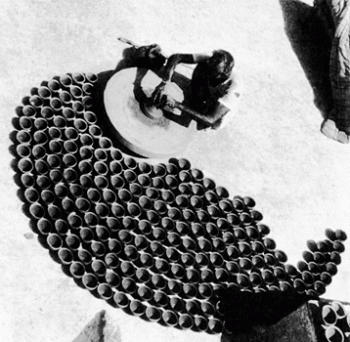American Journal of Archaeology | The Journal of the Archaeological Institute of America
You are here
The Production and Distribution of Pottery at Pompeii: A Review of the Evidence; Part 1, Production
January 2009 (113.1)
The Production and Distribution of Pottery at Pompeii: A Review of the Evidence; Part 1, Production
This study, in two parts, reviews the evidence from Pompeii for the production and distribution of pottery. Part 1, the present article, considers the production of pottery. Evidence is scant for the pre-Roman period but includes a refuse deposit containing Black Gloss Ware wasters, a pottery kiln with associated Black Gloss Ware and commonware wasters, and a mold for the manufacture of Italo-Megarian Ware bowls. There is substantially more material for the Roman period, including two frescoes depicting potters, three graffiti referring to potters, and the excavated remains of two modestly sized pottery production facilities, neither of which has been published in detail. The frescoes suggest that potters at Pompeii used rod-driven, single-wheel potter’s wheels. The Via di Nocera facility, which manufactured lamps and commonware, is perhaps the most complete pottery production facility from the Roman world, and it is possible to reconstruct the operations carried out in its various spaces in considerable detail. The Via Superior facility, which manufactured cookwares, was only partially excavated, so it is more difficult to infer its operations. Together, these two facilities may have supplied Roman-period Pompeii with much or all of its locally manufactured cookwares, commonwares, and lamps. Part 2, which will appear in a forthcoming issue of the AJA, examines the material basis for pottery production at Pompeii (i.e., the availability and use of raw materials) and its distribution.
The Production and Distribution of Pottery at Pompeii: A Review of the Evidence; Part 1, Production
By J. Theodore Peña and Myles McCallum
American Journal of Archaeology Vol. 113, No. 1 (January 2009), pp. 57–79
DOI: 10.3764/aja.113.1.57
© 2009 Archaeological Institute of America


